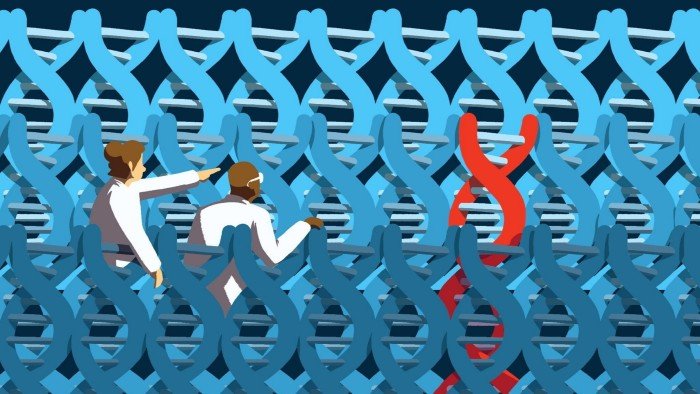Unlock the Editor’s Digest for free
Roula Khalaf, Editor of the FT, selects her favourite stories in this weekly newsletter.
The writer is a science commentator
The news this month of a medical first — an infant receiving personalised gene therapy for a life-threatening rare disease — is a milestone that matters many times over. It gives some hope to young patients and their families facing otherwise bleak futures: three in 10 children with rare genetic conditions die before turning five.
It shines a spotlight on rare diseases, which garner less attention than common killers like cancer and heart disease. Such conditions are individually rare but collectively common, affecting 3.5mn people in the UK alone.
But it also sends a critical message about the value of fundamental and translational scientific research. The work that led to this breakthrough, using “genetic scissors” to repair a faulty gene, began in laboratories pursuing basic science and was later adapted for therapeutic use. If we are to safeguard the breakthroughs of the future, governments must recognise and protect the pipelines that lead from curiosity-driven investigation to real-world benefit.
A disease is regarded as “rare” in WHO regions if it affects fewer than one in 2,000 people (it is sometimes classified slightly differently in the US, as any condition that affects fewer than 200,000 people nationwide). About 80 per cent of these conditions have a genetic component; other causes include infections and cancers. There are thought to be more than 7,000 distinct rare diseases affecting 300mn people globally. There are no treatments for the vast majority of these disorders.
One patient, a little boy called KJ, was born last year with a genetic mutation that meant his liver could not process ammonia, a waste product of protein digestion. The toxic build-up can damage organs, including the brain; half of sufferers die in early infancy.
KJ was thought too vulnerable for a liver transplant; researchers in Pennsylvania asked his parents’ permission to try Crispr gene-editing, which can be used to add in or delete genes. They developed a potential gene therapy to correct the mutation. After animal tests and speedy regulatory approval, scientists administered two doses to KJ before he was eight months old. His health improved and his medication was reduced, though he will need life-long monitoring.
Sarah Wynn, chief executive of Unique, a UK charity supporting families affected by rare chromosomal and genetic disorders, praised the work but warned against hype. “There is enormous excitement in the rare disease community because lots of these conditions have not had treatments or therapies,” Wynn told me. “But . . . there are many we have not been able to diagnose yet.”
Wynn, a geneticist, suffered several miscarriages before discovering that her husband carried a rare mutation (the couple have since had three children, two of whom carry the mutation). There are, she explains, about 5mn tiny genetic differences that distinguish us from each other; some are inherited and others are random mutations. Some have no discernible effect; some contribute to the characteristics that make us different, like hair colour.
But sometimes a mutation can delay or harm development, as in KJ’s case. Children with a suspected genetic condition can have their genome sequenced but, Wynn points out, “the tricky bit is interpreting the sequence”. Genetic knowledge is still evolving, with many aberrant mutations yet to be catalogued.
About 40 per cent of those undergoing genome sequencing will receive a diagnosis. For the fortunate, that can point to treatments; news of an inherited mutation can also help with future family planning. For the other 60 per cent, the DNA can be stored in the hope that a diagnosis might reveal itself later.
Research programmes like the Deciphering Developmental Disorders, a study of 14,000 families in the UK and Ireland, are steadily unveiling new disorders. The 100,000 Genomes Project is also contributing. Diversity in genetic data is critical, Wynn stresses, so that reference genomes used in diagnostics capture the full spectrum of global variation.
KJ’s treatment, meanwhile, began with the work of Jennifer Doudna and Emmanuelle Charpentier, who won the 2020 Nobel Prize in chemistry for their novel method of editing DNA. In their journal paper, the scientists and doctors who treated KJ acknowledge several grants from the US National Institutes of Health that allowed them to translate that revolutionary finding into the gene therapy.
The NIH is now being savaged by the Trump administration. We can only guess at the future health gains being lost as a result.

